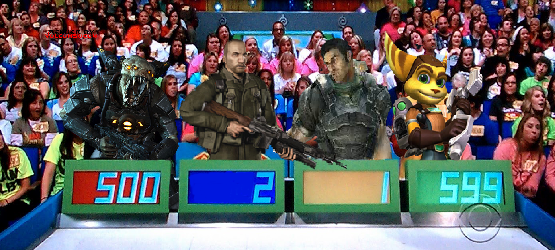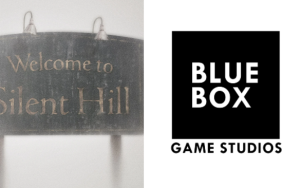Welcome to a Daily Reaction special by Dan Oravasaari and Sebastian Moss where we bring on an established developer to come interview us. With the growing success of the daily feature, and the overwhelming response from fans, developers have now started to join in with the discussion and pose your favorite critics some hard hitting questions.
Ted Price, Founder and CEO of Insomniac Games – the studio behind the PlayStation exclusive Resistance and Ratchet & Clank franchises, as well as the upcoming multiplatform game Fuse – asks:
Ted Price: What do you think the biggest problem in games industry today is, from a critic’s perspective?
Dan: First of all, thank you for the question Ted. I think we are currently at a weird point in the industry where we are facing a number of large issues, but the biggest one has to be the mentality of the average consumer and the general public. Most gamers are very unwilling to branch outside of their comfort zone, which is why we end up seeing so many Call of Duty clones and why some franchises are almost impossible for other developers to dethrone by themselves.
Fans can become mentally pigeonholed into specific genre traits and push the need for developers to include those aspects into development of other titles. The FPS genre really has become one of the most notable for this problem, given the rampant success of it as a whole, but certain aspects that used to differentiate the games have all but become a blur. Respawn is now almost mandatory for all games (not just shooters), and this was far from the case in the past. Leveling or RPG aspects in shooters, Killstreaks, health-regeneration and control schemes are all now standard form for any game that wants to give their protagonist a gun – and anyone who strays risks blowback from fans for things feeling “wrong”.
The best example of this was the Killzone franchise that got hit badly by FPS fans for not feeling like CoD, which is a major disservice to Guerrilla Games and the industry as a whole. If developers are going to be worried that they cannot stray too far from development, the ability for the industry to keep moving forward is only going to be slowed down by our own biases and inability to appreciate the best aspect of gaming in our current climate. We currently have the technology to push the industry in so many directions, but are unable to make use of most of it, for fear of fans writing off a multimillion dollar project before even putting their hands on it.
Seb: I think you’re almost right. It’s not the fans or the consumers that are the biggest problem. It’s the fear itself.
Developers are scared to try anything new, but even if they want to, publishers are too scared to support them. Ultimately, the games industry is a money-making business, and to publishers that’s all that matters, so you can understand why they try to stick to the same proven formula again and again… but it’s short sighted.
Only a few years ago THQ was a huge publisher, raking in billions for the company and its investors with family-orientated licensed games. The good times had to end, however, and that market shrank considerably as the current gen came around. But THQ didn’t adapt quickly, they were stuck in the past, too scared to try something new, even though they needed to. Now they’re dead. Former THQ exec Danny Bilson told GI.biz “it’s hard to let go of how the company had done so well. We were slower because of that.”
As the cost of developing games and marketing them continues to rise, this reticence to innovate will rise in turn. Publishers will stick to what they know works – Call of Duty, for example – or they’ll try to copy what they see working for other publishers – Call of Duty, for example. All this leads to is stagnation, a general feeling of sameness in an industry that is afraid of change.
In fact, the only time mainstream publishers do anything completely different is when they try to buy their way into new markets, such as mobile or social, by acquiring studios that are massively overpriced. Everyone outside of the publishing houses could see the enormously expensive purchases of small social devs were bad ideas born out of blind fear. But this fear, this panic, has led to publishers desperately fighting to gain traction in markets that are increasingly proving to be bubbles, or, at the very least, overblown.
The games industry is either paralyzed by abject fear that forces it to produce the same content, or wracked by ludicrously panicked moves that end up with Zynga impulsively buying OMGPOP for $180 million, after making one hit game that had already passed its peak.
Fans fear change in their beloved franchises, consumers fear changing their purchasing habits from their favorite genres and series, developers fear making something different that might not appeal to those consumers, and publishers fear investing in something that has no proven track record. We are paralyzed by fear, and I don’t ever see that changing.

Ted Price: Over the last year, we in the development industry have seen a pretty drastic change in how games are reviewed in terms of their scores, what do you think is driving that?
Seb: It’s an interesting one, because games journalists are often criticized for only using a 7-10 scale, despite proclaiming to score games out of 10. But, over the last year, we’ve seen a few games like Aliens: Colonial Marines receive incredibly low review scores from most publications, hinting that we are seeing an increased understanding by both journalists and consumers that a 7 isn’t a bad score.
Honestly, though, I don’t think this change has been truly drastic. It’s still gradual, especially in the more mainstream press outlets, and it’s a hard cycle to break. If journalists immediately changed their own internal interpretation of 1-10, readers would question why game X received a lower score than the similar game Y, which was reviewed a few years ago.
Publishers, equally, are still in the belief that really high scores are all that matter, often going as far as to enforce the hideous tactic of withholding developer benefits to games that score less than 80/85 on Metacritic.
A side reason is simply that a lot of sites are increasingly taking on smaller games and indie creations, which are often all over the place in terms of quality. Previously, sites would focus on reviewing smash-hit AAA titles because that’s where the audience was focused, and, as they are $100 million titles, they’re generally highly polished and worth a high score. Now, we’ve got a mixture, which is healthier for everyone, as well as helping acclimatize people to lower scores, so that the world doesn’t implode when a big title gets a shockingly mid-range score.
We are seeing this change at all because of some readers pointing out the silliness of only ever giving out high scores, and because some smaller publications have satirized the phenomenon. But it’ll continue to be slow as the majority of readers and journalists remain stuck in the 7-10 past.
Dan: There definitely is a penchant among sites to push scores to the expected median for various reasons. The biggest proponent to this really has to be public expectations and the need to rely on a fanbase to sustain a site’s viability.
Almost all gamers and even critics are going to be guilty of a common issue that is detrimental to the way the games industry is handled – all of us have seen a game and pretty much knew where it fell on the arbitrary scale we have established as an industry, without ever giving it a proper chance to prove itself. These expectations, fueled off of limited perceptions, is the driving force as to why some products capture our attention, while other seem to just get lost in the crowd. The problem is that these perceptions can be very misleading, as the status quo of advertising has been to capture the attention of consumers at almost any cost, which is driving them to believe the quality of a game is directly related to its advertising budget.
This dichotomy between a game’s presence in the market and the quality of its production is a problem for critics and reviewers, because, once the market believes it knows the ‘value’ of a product, it refuses to be proven wrong. Sadly, the job of a critic is to circumvent all of the bells and whistles that go with pushing out a product and break it down to a uniform scale that disregards erroneous information. This leaves a conflict between the expectations from the general public as well as their own false pretenses, to the true nature of a product’s rating among the sea of other titles that influence perception.
The understanding that all sites are reliant on the perception and interaction of viewers forces many sites to accommodate existing expectations into their review scores, which pushes games with higher budgets up the ranking. While not all games are undeserving of their prestigious scores, the fear of ruining, or going against, a site’s community and the general populace is an internal battle that I feel all reviewers feel when figuring out a final grade, even though they shouldn’t.
Sadly, as long as publications are reliant on pageviews to stay afloat, and advertising companies exploit those that are adamant about their ignorance, there is always the strong possibility that review scores will be by those willing simply to appease their fans, even if it means they play it safe with scores.
What do you think is the biggest problem in the industry today? What is driving the changes we see in review scores today (if there are any changes)? Are you at fault? Are we? Let us know in the comments below, or by emailing us at DailyReaction@PlayStationLifeStyle.net. You can also tweet us at Seb and Dan for updates on who we might be bringing onto DR in the future.
Also, make sure to stay tuned to PlayStation LifeStyle for a full interview with Ted Price about his upcoming game Fuse, the Resistance franchise and the Ratchet & Clank movie later this week.








